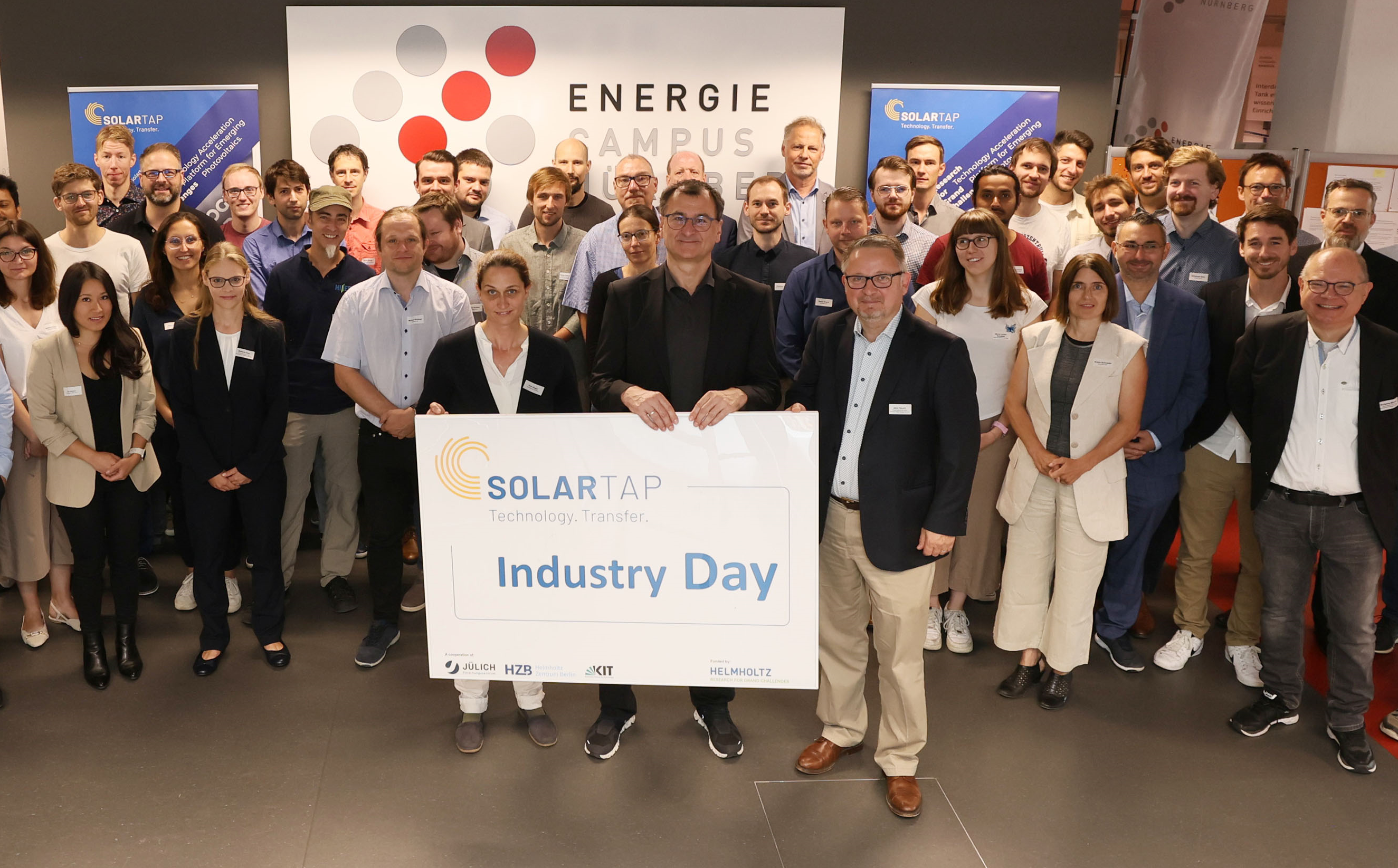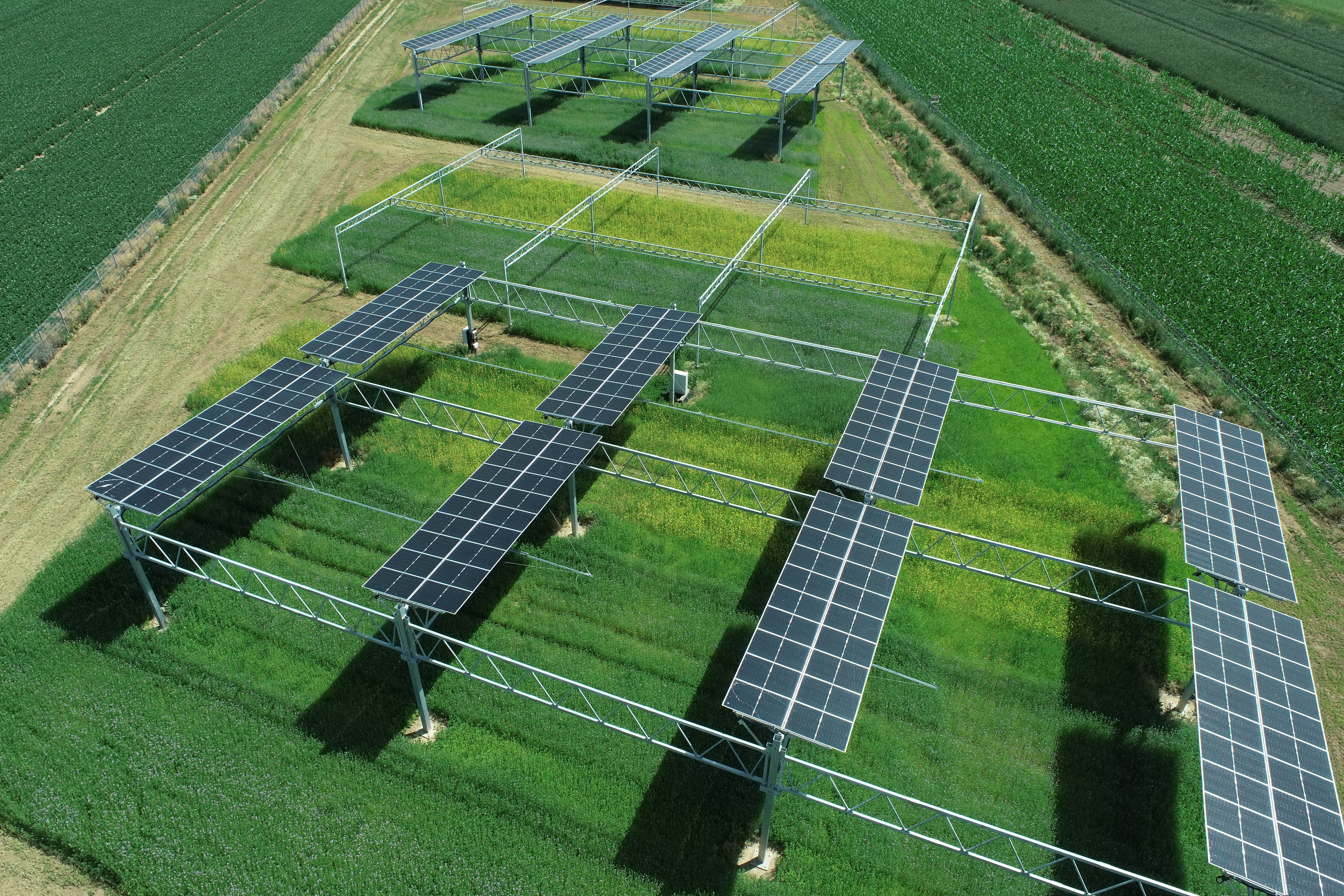On the way to market readiness for multi-benefit PV: 2nd Solar TAP Industry Day
Berlin, 10 November 2023 - More than 65 material suppliers, device manufacturers, producers and users who want to establish themselves in the field of multi-benefit photovoltaics have come together at the 2nd Solar TAP Industry Day in Berlin. Within the Solar TAP innovation platform (short for "Solar Technology Acceleration Platform for emerging Photovoltaics"), industry and science are working hand-in-hand to rapidly develop these emerging photovoltaic technologies to market readiness.
New potential for the expansion of photovoltaics through multi-benefit PV
Photovoltaic technologies, which offer other benefits in addition to the generation of "green" electricity ("multi-benefit"), have enormous potential for the expansion of renewable energies. They are based on printed innovative photovoltaic technologies - so-called "emerging photovoltaics". These are lightweight, flexible and can be customised in terms of colour and transparency. The modules can also be designed in many different shapes and designs - depending on the application requirements. The cells can be attached to materials such as plastic, glass or metal, giving them additional functionality. This creates new potential for the expansion of PV in agriculture or the building sector, for example, but could also open up new opportunities in the transport sector. Solar energy can thus be utilised in many places and can be integrated into existing structures.
To achieve this, industry partners and scientists are working together in the Solar TAP innovation platform launched this year to develop technologies for these multi-benefit PV applications and bring them to market maturity quickly.
Building-integrated photovoltaics: façade element and sustainable power generator

Less than 0.1 per cent of the façade surfaces available in Germany are currently used for photovoltaics. A huge potential where photovoltaics can be both: A façade element with thermal insulation, wind and weather protection, an architectural element and a sustainable power generator. But how do the orientation of the solar modules, soiling and indirect irradiation affect electricity production? And what effect does a solar façade have on the building itself? Researchers at the Helmholtz Zentrum Berlin (HZB) are investigating these questions: This is where the first and internationally unique living laboratory for building-integrated photovoltaics (BIPV for short) is located, which Björn Rau (Deputy Director of the Institute and Technical Director of the Photovoltaics Competence Centre (PVcomB), HZB) presented.
The knowledge gained here flows directly into the research and consulting activities of the HZB and thus benefits both science and the general public. In addition, the building serves as a demonstration object for architects and for research locations of the Helmholtz Association, and shows how new buildings can be designed responsibly with regard to sustainability.
Market readiness through a structured roadmapping process
After the participants identified transfer opportunities and developed ideas for joint activities at the first Solar TAP Industry Day in July, the second meeting, which took place at the Helmholtz-Zentrum Berlin, focused on the concretisation and further development of a joint roadmap.

Following a status update by the Solar TAP Steering Committee, Solar TAP Manager Dr. Jens Hauch (HI ERN) showcased the underlying scientific infrastructure that HI ERN, HZB and KIT contribute. The three research institutes form a closed value chain in which world-leading laboratories and experts from the Helmholtz Association are involved. Within the framework of Solar TAP, they offer industrial partners the opportunity to co-operate very quickly in transfer projects. More than a dozen of these projects have already been started.

As an introduction to the upcoming roadmapping process, Dr. Puzant Baliozian (Project Manager of the Photovoltaic Production Equipment Department, VDMA) reported in his keynote speech on the background to the process of creating the ITRPV roadmap ( International Technology Roadmap Photovoltaic ), the guiding document for the global photovoltaic industry, which is revised annually by the VDMA. Dr. Baliozian also reported on existing roadmapping results for organic and perovskite photovoltaics from the OE-A (Organic and Printed Electronics Association) roadmap.
The participants then worked out the respective application profiles for the four main application fields BIPV, AgriPV, IoT PV and MobiPV in small groups: Key challenges and implementation-relevant parameters were identified, as were the relevant stakeholders and partners.
The presentation of the 22 industry partners then provided a good starting point for dialogue.
Insights into the research infrastructure of the HZB: Laboratory tours and visit to the X-ray source BESSY II

Finally, the laboratory tours offered interesting insights into the research infrastructure of the HZB:
In addition to the HZB Outdoor Lab, the Innovation Lab HySprint/KOALA also opened its lab doors: with the Koala Cluster, the centre in Berlin has a globally unique production facility based on evaporation technology to produce perovskite silicon tandem solar cells in near-industrial size. The Innovation Lab HySprint conducts application-oriented research into promising solar cells and the Photovoltaics Competence Centre (PVComB) develops thin-film photovoltaic technologies and products together with industry. At the Integrative Research Institute for the Sciences (IRIS), an institution of Humboldt-Universität Berlin, new types of hybrid materials and functional systems with previously inaccessible optical, electronic, mechanical and chemical properties are being researched on an interdisciplinary basis.
The participants will also take the opportunity to visit the BESSY II X-ray source, which emits intense radiation in the soft X-ray range, in order to investigate the functioning of the energy materials in operando.

Impressions
About Solar TAP

In the recently launched innovation platform Solar TAP (short for "Solar Technology Acceleration Platform for emerging Photovoltaics"), the technologies for these new multi-benefit PV applications are to be developed together with industry partners. The Forschungszentrum Jülich, the Helmholtz-Zentrum Berlin and the Karlsruhe Institut für Technologie want to make the results fast and easily accessible to industry, society and end users via the platform.
Under the coordination of the Helmholtz Institute Erlangen-Nuremberg for Renewable Energy (HI ERN), a branch of Forschungszentrum Jülich, the three research facilities form a closed value chain in which world-leading laboratories and experts of the Helmholtz Association participate.
Solar TAP is one of three new innovation platforms funded by the Helmholtz Association with a total of 40 million euros from the Pact for Research and Innovation. The aim is to create new structures and opportunities for technology transfer and the joint use of large-scale equipment, research infrastructures and data.
The funding for the Solar TAP innovation platform amounts to 15.1 million euros for the 3-year set-up phase which is funded starting in March 2023. In close cooperation with strong partners from industry and society, the platform will strengthen transfer and innovation in the Helmholtz Association and initiate long-term applied solutions.
Contact
Dr. Jens Hauch
Abteilungsleiter Teamleiter "High Throughput Materials and Devices"
Room 1.12
Prof. Christoph Brabec
Director and Head of Research Department High Throughput Methods in Photovoltaics
Room 367






